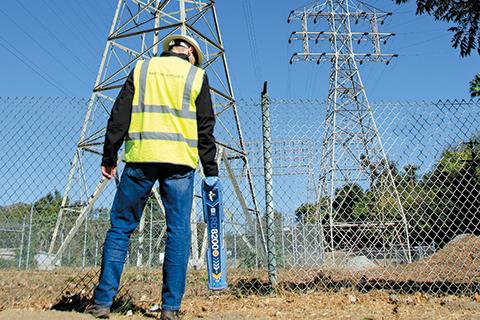The Internet of Things (IoT) is a revolutionary concept that has been around for decades. However, the technology has become more widely used in recent times because it can be used almost anywhere.
This includes industries like construction and engineering where IoT-enabled devices have helped make processes simpler, safer and more cost-effective than ever before. The Internet of Things (IoT) is essentially a network of physical objects connected using embedded sensors or microchips which makes them “smart” enough to send data over internet protocol.
What is a pipe locator?
A pipe locator is a tool that uses radio waves, magnetic fields or sound waves to locate underground pipes. Pipe locators can be handheld or vehicle-mounted and are used to find water mains, sewer lines, gas lines and other buried utilities. They work by sending out radio signals that bounce off of metal objects underground. The reflected signal returns through the receiver of the device on your end so you can see where it came from and follow this path until you reach your target object.
Pipe-locating devices come in many different shapes, sizes and prices depending on their capabilities as well as how much money you want to spend on them! Some pipe locators have more advanced features such as GPS tracking systems built into them allowing users greater accuracy when using their tools while others may simply offer basic functionality without any additional bells or whistles added to them. This makes them less expensive than some competitors while still providing reliable results nonetheless!
How does a pipe locator work?
A pipe locator works by using radio waves to detect the pipe. The device emits a signal that is picked up by the pipe, which then sends back an echo of this signal. This allows you to locate where your pipes are buried underground without having to dig up your lawn or driveway to find them.
The device can be used on pipes that are buried under concrete, asphalt, dirt and other materials as long as there is some type of opening for it (like a hole).
Types of pipe locators
There are several types of pipe locators. Each type uses a different method to locate buried pipes.
Electrical pipe locators
Electrical pipe locators use an electrical current to detect buried pipes and can be used in both dry and wet soils. This type of device is often used by plumbers because it’s portable, inexpensive, and easy to use; however, it has limitations: it can only detect metal pipes at depths up to about 10 feet (3 m).
Ultrasonic pipe locators
Ultrasonic pipe locators send out high-frequency sound waves that bounce off buried objects; the time between sending out the signal and receiving its echo tells you how far away something is from your location. Thus whether or not it might be underfoot!
This technology is used primarily for finding pipes in very shallow soil conditions such as driveways or sidewalks where there may not be enough room between two buildings’ foundations for standard excavation equipment like shovels/pickaxes etc.
Benefits of using pipe locators
There are many benefits to using a pipe locator. The first and most obvious benefit is that it reduces the risk of damaging pipes, which can be costly in terms of time and money.
A pipe locator can also help you find buried pipes faster than traditional methods like digging or excavation, which can save you time and money as well. If your project doesn’t require digging at all, then using a pipe locator will save both time and money by eliminating unnecessary excavation work.
Factors to consider when using pipe locators
Here are some of the crucial factors to consider when using pipe locators:
- The type of pipe locator you are using. There are many different types of pipe locators, and each has its own set of pros and cons. You can choose between electric, magnetic or non-magnetic pipe locators depending on what kind of information you need about your pipes.
- The type of pipe you are looking for. Not all pipes are created equal! Pipes made from PVC will have different properties than those made from cast iron or steel. These differences will affect how well each type can be detected by certain kinds of sensors (e.g., magnetic vs electrical).
- The location where you want to find the underground utilities before digging them up so as not to damage them during construction projects such as building new homes or laying down new sewer lines in existing ones. These areas include sidewalks outside buildings but also driveways leading up into houses since these areas often contain buried wires running underneath them which could get damaged.
How to use pipe locators?
Woking Drainage Services uses pipe locators to scan for pipes and mark them. Once you have located a pipe, you can dig around it and then follow it to its destination. The best part about these devices is that they work even when there is no power source available.
It is important not only for professionals but also for homeowners who want to do some plumbing work in their homes or offices. This is because it helps them find out where exactly they need to dig so that they don’t damage any other object while doing so
How can I use a pipe locator to find a drain or sewer line?
To find the location of a drain or sewer line, you can use a pipe locator. A pipe locator uses an ultrasonic signal to detect metal underground. When the metal comes within range of the device’s transducer, it gives off an echo that is picked up by its receiver and analyzed by software to determine its location.
The process is similar to magnetic field detection technology: when there is metal nearby (like steel pipe), it creates a magnetic field which can be detected by an electromagnetic coil on top of your handheld device called a magnetometer.
Why do I need to use a pipe locator instead of just digging?
If you’re looking for a quick, safe and accurate way to find pipes in the ground, then a pipe locator is the solution for you. They’re much cheaper than digging and can be used by anyone with minimal training.
Pipes have been around for centuries but they do not always stay where they are supposed to stay. As time goes on, soil moves around which causes pipes or cables that were once buried deep underground to become exposed at the surface level due to erosion or other natural processes like rain runoff from nearby hillsides washing away dirt from around them as well as people digging into those same areas trying their luck at getting lucky with some free cable TV.
In a nutshell
Pipe locators are a great tool for finding pipes and other underground utilities. They can help you avoid costly repairs or even lawsuits, so it’s important to use them before digging in your yard or driveway. The best part is that they’re easy to use!
Ready to leverage the efficiency of pipe locators for your project? Contact Woking Drainage Services today to explore how our cutting-edge technology can help you locate underground pipes with precision and save you time and money.











